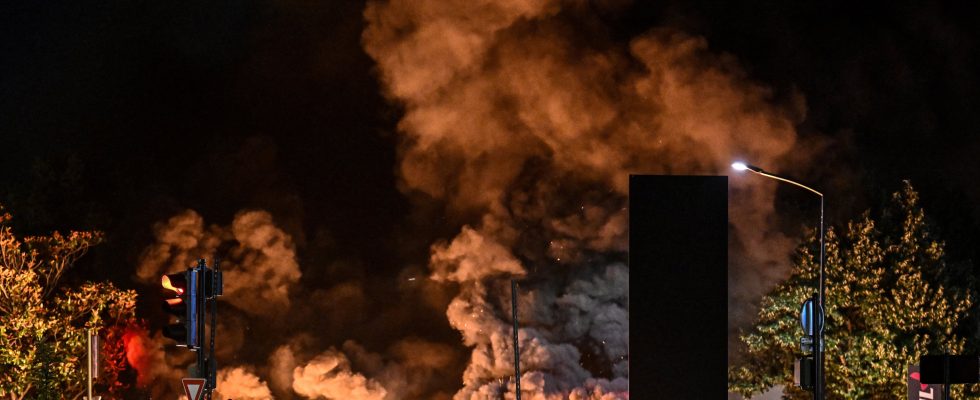The urban riots which periodically shake France are one of the symptoms of social segregation. The staggering inequalities in academic performance between different establishments and sectors are another, not unrelated to the previous one. But rather than analyzing the events that triggered the riots and the motivations of the rioters, let us look at the social conditions which, when such events occur, catalyze a widespread conflagration. Analyzes based on “decivilization”, “wilding” or “regression towards ethnic origins”, just like proposals to sanction families, miss the point. Indeed, the behavior of the rioters is not transmitted or promoted by their parents, nor by their country of origin, nor by their ancestral ethnicity, whatever it may be.
Many work in psychology and sociology show that these behaviors are the fruit of group cultures, acquired social norms, tribal logics which emerge wherever idle young people experiencing the same difficulties find themselves in isolation. The emergence of these behaviors is favored by schooling in establishments concentrating the students with the most difficulties, by an environment poor in professional opportunities where omnipresent delinquency seems the only viable alternative, and by geographical and social segregation offering few opportunities. positive interactions with other layers of society.
Failing in the school system, excluded from employment, single, without long-term prospects, forced to identify with a marginalized and devalued group within which competition for status and dominance leads them towards ever-increasing challenges. extreme, and frequently exposed to humiliating events for members of their group generating feelings of anger and injustice, these young people don’t have much to lose in challenges to authority and the law and in the unrestrained expression of their anger.
USA, Brazil, South Africa, the same causes produce the same effects
The phenomenon is not unique to France: whether in the United States, Brazil or South Africa, the same causes produce the same effects wherever social segregation concentrates all these risk factors. If we want to stem the phenomenon, there is no point in accusing parents or origins. Such concentrations and the formation of such groups must be prevented. Even if certain policies have shown some success in promoting social housing or reducing school segregation, no “integration model”, no city policy, no social housing program, no school sectorization can entirely resolve these problems if they do not address the root of the problem: the ghettoization of disadvantaged populations.
As indicated a note from France Stratégie, it is not enough to require municipalities to build 25% of HLM, as prescribed by the SRU law, to generate social diversity. Because the usual concept of HLM implies social segregation and a concentration of difficulties in the same building. If we want to dissolve the cultures of marginalized groups, we must disperse the individuals affected throughout society and prevent them from reaching critical concentration anywhere. To achieve this true social diversity, there is no other solution than to atomize HLM: it is in each building that there should be 25% low-rent apartments, and in each subdivision that There should be 25% low-rent houses. Any real estate project should be subject to an automatic 25% pre-emption by the municipality.
Such provisions already exist in certain local town planning plans and in certain real estate projects. We should therefore now generalize them, and require that the social housing thus constructed be distributed uniformly throughout all projects rather than segregated in a building or a separate stairwell. And we still need to ensure that private establishments do not sabotage this initiative by letting them reinstate school segregation even within socially mixed neighborhoods. True social diversity would prevent the formation of marginalized groups, force intergroup contact and cooperation with the effect of undermining the formation of tribal feelings, and integrate the most disadvantaged individuals into a social fabric richer in educational, professional, and social opportunities.
A naive dream?
Even if dreaming of harmonious cohabitation, intercultural dialogue, new solidarities and successful integration in mixed co-ownerships is undoubtedly excessively naive, there is no need to achieve utopia. There will always be neighborhood problems, as there already are in socially homogeneous neighborhoods. But simply escaping the procession of problems intrinsically generated by segregation would in itself be phenomenal progress.
Such a policy would of course have a cost: that of granting moderate rents for housing which was not built at a discount but purchased at a price close to the market. Many other legitimate questions can be raised, such as the difficult management of an HLM park scattered throughout private condominiums, or the inevitable transition period during which complementary social housing and school sectorization policies will remain necessary. But these are solvable problems, and it is a price that may be worth paying to abolish social segregation, prevent the concentration of difficulties and the emergence of violent group cultures.
Franck Ramus is Director of Research at the CNRS in the Department of Cognitive Studies at the Ecole Normale Supérieure in Paris.
